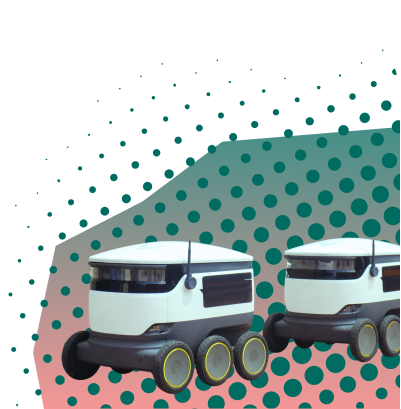The Power Of AI

Artificial intelligence (AI) systems today are already revolutionising industries and ingraining themselves into every aspect of everyday life. These systems, which employ machines to collect and analyse vast amounts of data, have fundamentally altered the way people work and play and are currently used in a wide range of industries, from banking and energy to agriculture.
AI is one tool that has become indispensable in the pursuit of accelerating a sustainable future. It can improve climate predictions, make decarbonizing industries’ decision-making smarter, and increase funding for renewable energy sources. Research by PwC UK estimates that using AI for environmental applications could boost the global economy by up to $5.2 trillion in 2030, representing a 4.4 percent increase over business as usual, while lowering greenhouse gas emissions by 4 percent, which is equal to the annual emissions of Australia, Canada, and Japan combined.
Despite the small chorus of critics questioning AI’s environmental impact and ethics, Prof. Digum is adamant its problems are only a small slice of the pie and the opportunity vastly dwarfs the risk. “It’s time to start thinking about doing AI in a more environmentally friendly way”, Prof. Digum, part of a 52-person expert group advising the European Commission on trustworthy and ‘human-centric’ AI.
With AI becoming a front runner in unlocking the next steps to sustainability, this article delves deeper into the technology’s core competencies and how it can accelerate climate action.
What Is Artificial Intelligence?
 Artificial Intelligence is the capacity of any machine or computer to imitate human abilities including learning from examples and experience, object recognition, language comprehension and response, decision-making, and problem-solving. By combining these many abilities, the machine can carry out complex tasks, such as driving a car.
Artificial Intelligence is the capacity of any machine or computer to imitate human abilities including learning from examples and experience, object recognition, language comprehension and response, decision-making, and problem-solving. By combining these many abilities, the machine can carry out complex tasks, such as driving a car.
Due to its effective implementation in previously unimaginable applications, such as talking to Siri or Alexa to set up your schedule, AI has grown in popularity. Leaders from all over the world have integrated AI into their strategies to facilitate a sustainable outlook on business operations. For example, Google employs AI to cut the energy consumption of its resource-intensive data centres by 40%, and Carbon Tracker trails coal plant emissions with AI to suggest investments in less-impactful ventures.
How Can AI Help Achieve Sustainability
The technology is already in use to create greener smart cities in China, monitor deforestation in the Amazon, and deliver natural catastrophe alerts to Japan. By supplying solar and wind energy into the grid when needed, AI applications are also assisting in the design of more energy-efficient buildings, enhancing power storage, and optimizing the deployment of renewable energy sources. On a smaller scale, it is assisting families in reducing their energy consumption by automatically turning off lights when not in use or rerouting electricity from electric cars to the grid to fulfil expected demand. As a result, AI may contribute to a 4% reduction in global greenhouse gas emissions by 2030. Here’s a closer look at what GreenTech sectors are embracing the use of AI:
Buildings and Cities:
AI’s biggest success in this sector is from increasing the efficiency of energy use across buildings and urban environments. It can read data from smart metres and infer energy use from building characteristics. AI is employed in soft sensing systems, data mining, and waste management on a city-scale, as well as in smart buildings to enhance energy-saving features like heating and lighting.
Transportation:
From improving estimates of transportation usage and optimizing freight usage, to increasing the utilization of low-carbon transport options, AI has many sustainable functionalities in the industry. In terms of electric vehicles, AI can improve charging locations and protocols, as well as influence battery and next-generation fuel designs. It also plays a crucial part in the development of autonomous vehicle technology.
Agriculture:
Supporting both mitigation and adaption efforts, AI plays a key role in evolving traditional farming methods to be sustainable. From remote sensing technologies, crop monitoring, and yield prediction, which together boost food security in the face of adverse weather conditions, to precision agriculture, which employs AI to improve efficiency and cut greenhouse gas emissions sensitive to the variability within crops.
Forestry and Land Use:
AI can assist in land-use practices and environmentally friendly carbon sequestration strategies in several ways. To estimate carbon stocks, which are used to drive decisions about land management and determine carbon offsets, AI technologies are being combined with satellite imagery. It is also used in tracking deforestation and other land-use changes, as well as in drones to accelerate afforestation.
Carbon Markets:
Carbon credits are becoming a vocalised conversation within GreenTech, with AI at its core. It is used to provide carbon stock estimation to inform and forecast pricing, as well as analyze the factors driving these prices. AI can be applied to non-carbon markets to evaluate and simulate behaviour patterns and align market structure with climate impact. By calculating climate-related risks and analysing business disclosures, AI can also help guide insurance and financial policies.
Ecosystems and Biodiversity:
AI can help biodiversity be preserved in the face of climate change. AI techniques are being implemented into sensors that track wildlife, remote sensing tools that measure ecosystem change, and species identification systems that employ visual or aural data. AI is also starting to be applied to the analysis of ecological data, for instance from citizen science databases.
The AI Drawback
 As AI has evolved, so has the research into its carbon emissions. Recent research by the University of Massachusetts indicated electricity needed to search and train a typical neural network emits more than 626,000 pounds of carbon dioxide, which is five times more than the amount that an average car will emit in its lifetime. Although its carbon footprints alone are not to blame for the rise of the planet’s temperature, AI is still a contributing element, validated by the carbon emissions from digital technologies being equivalent to those generated by the entire airline industry.
As AI has evolved, so has the research into its carbon emissions. Recent research by the University of Massachusetts indicated electricity needed to search and train a typical neural network emits more than 626,000 pounds of carbon dioxide, which is five times more than the amount that an average car will emit in its lifetime. Although its carbon footprints alone are not to blame for the rise of the planet’s temperature, AI is still a contributing element, validated by the carbon emissions from digital technologies being equivalent to those generated by the entire airline industry.
The optimal long-term answer given the widespread use of deep learning algorithms and sophisticated applications is to create AI algorithms that are efficient by design, incorporating both software and hardware models. Green AI principles have been presented by the AI Now Institute, a research center at New York University, that requires the integration of tech and climate legislation as well as complete transparency regarding a tech company’s carbon, energy, and environmental effect. AI’s answers to halting climate change will unavoidably be sustainable if it becomes self-sustaining.
Takeaway
As the awareness and measurement of AI’s impact on the environment grow, no doubt it will have a profound impact on the acceleration of a sustainable future. Albeit, there are some roadblocks to overturn, this technology has advanced to reverse climate change and reduce greenhouse gas emissions whilst being a trillion-dollar function.
However, the growth of AI within GreenTech can only balloon if it has the right team behind it to spearhead its operations. That’s where Storm4 come in. As specialist GreenTech recruiters, we are the front of mind for many AI-led businesses on a mission for a sustainable future. If you’re looking for a growth partner in your journey to sustainability, get in touch! – marketing@storm4.com.











